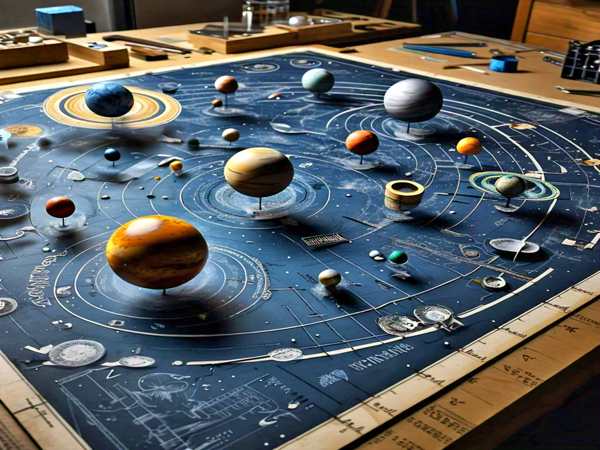A new study reveals that our solar system might not be as unique as we once thought. Researchers have found that planetary orbits around Sun-like stars tend to align in a disk-like fashion, similar to the arrangement of planets in our own solar system. This discovery suggests that our planetary system could be more of a cosmic norm rather than an exception.
The Growing Census of Exoplanets
Over the past decade, astronomers have discovered thousands of exoplanets—planets that orbit stars beyond our solar system. The HARPS spectrograph and NASA’s Kepler satellite have been at the forefront of this search, gathering extensive data on exoplanetary systems. These instruments have helped us better understand the architecture of these distant worlds, revealing that many star systems share striking similarities with our own.
A recent follow-up study led by the EXOEarths team from the Centro de Astrofísica da Universidade do Porto (CAUP) and in collaboration with Geneva University conducted a detailed analysis of this data. The findings were clear: the planetary orbits in many of these systems are strongly aligned, forming a flat, disk-like structure similar to our solar system. This alignment suggests a common pattern in how planetary systems form and evolve.
How Do We Find Exoplanets? The Two Main Methods
Detecting exoplanets is no easy feat, especially since they are so far away and often hidden in the glare of their parent stars. Astronomers primarily rely on two methods to uncover these hidden worlds: the radial velocity method and the transit method.
- Radial Velocity Method: This technique measures the “wobble” of a star caused by the gravitational pull of an orbiting planet. As the planet moves around the star, it causes the star to move slightly in response, which alters the star’s light due to the Doppler effect. Similar to how an ambulance’s siren changes pitch as it moves, the star’s light shifts in wavelength as it wobbles, revealing the presence of an unseen planet.
- Transit Method: The transit method detects planets when they pass in front of their host star, causing a temporary dimming of the star’s light. This mini-eclipse, although faint, provides critical information about the planet’s size and orbit. Even though the planet itself cannot be seen directly, the dip in starlight gives astronomers valuable clues about its characteristics.
A Solar System Blueprint?
The disk-like alignment of planetary orbits around Sun-like stars points to a common formation process across the galaxy. Our solar system, with its neatly aligned planets orbiting in a flat plane, might not be a cosmic outlier after all. Instead, it appears that this structure could be the standard for many planetary systems.
This finding reshapes our understanding of planet formation. It suggests that the processes leading to aligned orbits—such as the collapse of a protoplanetary disk—are prevalent throughout the universe. These insights help astronomers refine models of planetary system evolution, offering clues to the potential for habitable worlds around distant stars.
The Future of Exoplanet Exploration
As technology advances, astronomers will continue to uncover more exoplanets and gather data on their orbits, atmospheres, and potential habitability. Instruments like the James Webb Space Telescope and upcoming missions will delve deeper into the mysteries of these distant worlds, bringing us closer to answering fundamental questions about our place in the cosmos.
In the grand tapestry of the universe, our solar system may not be as unique as once believed. As we explore the stars, we find that the familiar patterns of planetary alignment are a common thread that binds us to distant worlds, hinting that the story of our solar system is echoed throughout the galaxy.

